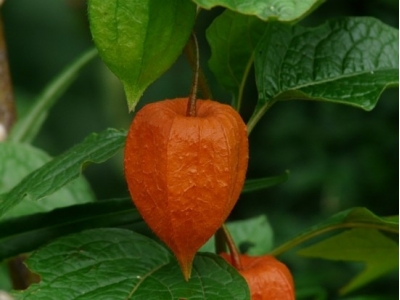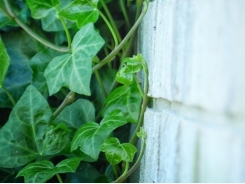How To Grow Chinese Lantern Flower (Physalis alkekengi)

If you haven't heard of Chinese lantern flower, you're not alone. Also known as Bladder, Winter, or Ground cherry, this incognito herbaceous plant's name can be confusing.
But it's as lovely as it is mysterious. Its papery orange blooms look like little lanterns set against vivid green foliage. The contrast is stunning, and the "lanterns" are fascinating!
Within the pretty lanterns lies a sweet surprise. A small, round fruit similar to a berry is tucked neatly inside. The fruits have been used by the Chinese for medicinal purposes for hundreds of years, and it's entirely possible that your very own ancestor might have baked the fruit from a Chinese paper lantern into a pie. Aside from being pretty and edible, Chinese lantern plant dries beautifully for a pretty, natural fall arrangement for decoration.
Chinese lantern (Physalis alkekengi) is a perennial plant from Europe and Asia that's hardy down to U.S. Department of Agriculture Zone 6. However, Chinese lantern plant has occasionally shed its tropical preferences and headed into some of the colder, northern zones, too. Chinese lantern is worth trying to grow in containers throughout the U.S. Just move a container full of Chinese lantern indoors before a freeze.
How to Grow and Care for Chinese Lantern Flower
Chinese lantern flower is easy to grow. In fact, it may be too easy to grow for some. Chinese lantern plant has a distinctive weedy growing habit. Like mint, it spreads quickly by underground stems. It's hard to contain even if you cut the plant itself down to the ground. To really contain Chinese lantern flower, plant them in a container.
Place several seeds in a pot or in the ground (if you dare), in regular garden soil. Cover the seeds with an inch of soil. Place your pot in full sun. Water regularly. Allow the soil around your Chinese lantern plant to dry between watering.
Chinese lantern plants air dry easily. Cut them when the flowers are at their peak of color during the heat of the afternoon. Avoid cutting damp branches. Bundle the stems together. Then, place the branches in a tall, open container, or hang the branches upright to dry in a cool, dark room.
Chinese Lantern Flower Pests, Problems, and Diseases
Besides its weedy habit, Chinese lantern plant is classified as an invasive species in some areas. Check your local extension offices for information about growing Chinese lantern plants in your area.
Chinese lantern plant is also considered a toxic plant. It's poisonous to humans and animals. The fruit should not be eaten until fully ripened, and the foliage should never be ingested. To be safe, always be certain of a plant's identity before choosing to eat any portion of it. Chinese lantern plant is thoroughly enjoyable as an ornamental plant, and you might want to leave it at that.
Chinese lantern plant is not susceptible to pests or to disease. It will develop root rot if it's overwatered, so well draining soil in the container you plant in, along with lots of sun, will help keep the roots happy and dry.
Chinese Lantern Flower Varieties
There isn't a plant that can compare to Chinese flower plant. Those pretty little lanterns make them unique. But if you're concerned about the toxicity and weedy nature of Chinese lantern plant, you might consider growing its cousin, goji berry, instead. Goji berry plants flower and develop colorful berries that have a similar appearance to Chinese paper lanterns. And goji berries are packed with nutrition rather than poison. Their growing habits are similar to those of Chinese flower plants.
Related news
Tools

Phối trộn thức ăn chăn nuôi

Pha dung dịch thủy canh

Định mức cho tôm ăn

Phối trộn phân bón NPK

Xác định tỷ lệ tôm sống

Chuyển đổi đơn vị phân bón

Xác định công suất sục khí

Chuyển đổi đơn vị tôm

Tính diện tích nhà kính

Tính thể tích ao



 How to Grow Trumpet Vine
How to Grow Trumpet Vine  How to Grow Lady's Mantle Flowers
How to Grow Lady's Mantle Flowers